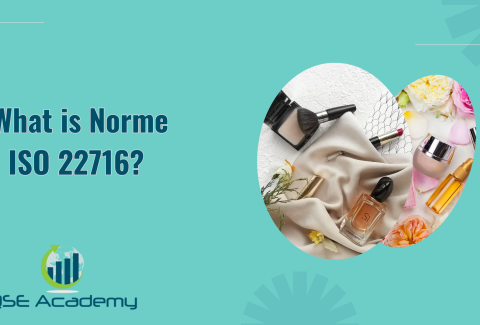Cosmetic Product Labeling Requirements Explained
Cosmetic Product Labeling Requirements Explained
When you think about a cosmetic product, the label might not be the first thing that comes to mind. But if you’ve ever checked for ingredients, looked for allergy warnings, or tried to understand how to use a product, you already know how important that label is. Cosmetic labeling requirements aren’t just about making your product look professional—they play a vital role in safety, compliance, and building trust with your customers.
Ensuring Product Safety
One of the main reasons for strict cosmetic labeling requirements is to protect consumers. Labels provide essential information like ingredient lists, usage instructions, and safety warnings. For example:
- Allergy Awareness: Clear ingredient lists help customers avoid products that might trigger allergies or sensitivities.
- Proper Use: Directions on how to use the product (e.g., “Avoid contact with eyes”) prevent misuse that could lead to irritation or harm.
Think of the label as your first line of communication with the customer, guiding them toward safe and effective use of your product.
Regulatory Compliance
If you’re in the cosmetics business, you know that regulations vary by country—and they can be strict. Meeting cosmetic labeling requirements ensures that your products comply with local laws, avoiding potential fines, recalls, or even being banned from sale.
For instance:
- In the U.S., the FDA mandates ingredient disclosure and proper identification of cosmetic products.
- The European Union requires labels to include specific symbols, multilingual information, and safety warnings.
By staying compliant, you’re not only protecting your business but also opening the door to global markets.
Building Consumer Trust
Let’s be real: customers are more likely to trust a product with a clear, professional label that provides all the necessary information. A well-labeled product says, “This brand cares about quality and transparency.” On the flip side, a label that’s missing key details or looks poorly designed can make customers think twice about making a purchase.
When your labels meet cosmetic labeling requirements, you’re showing customers that your brand values their safety and satisfaction. That trust can lead to repeat sales and glowing reviews.
Whether you’re a small indie brand or a global player, meeting cosmetic labeling requirements is non-negotiable. It’s not just about following the rules—it’s about protecting your customers, growing your business, and setting your brand apart. Ready to dive into what exactly needs to be on your labels? Let’s break it down in the next section!
Key Components of Cosmetic Labeling Requirements
If you’ve ever wondered what makes a cosmetic label compliant, you’re not alone. Cosmetic labeling requirements can feel like a long checklist, but each element plays a crucial role in ensuring your product is safe, clear, and legally compliant. Let’s break down the key components that should be on every cosmetic product label.
Product Identity
The first thing a customer should see on your label is exactly what your product is. Sounds obvious, right? But it’s actually a core part of cosmetic labeling requirements. You need to clearly state the name of the product and its intended purpose.
For example:
- Instead of just saying “Cream,” go with “Hydrating Face Cream.”
- Make sure this information is displayed prominently on the front of the packaging.
This helps customers quickly identify the product and prevents confusion.
Ingredient Declaration
Transparency is everything, especially when it comes to what’s inside your product. Cosmetic labeling requirements mandate that you list all ingredients in descending order of weight. Here’s how it works:
- Use standardized names, like those from the International Nomenclature of Cosmetic Ingredients (INCI), so customers and regulators can easily recognize them.
- Include every ingredient—even tiny amounts of colorants or preservatives must be listed.
This section is crucial for customers with allergies or sensitivities and shows that your brand is upfront about what’s in your products.
Net Quantity of Contents
Your label also needs to tell customers exactly how much product they’re getting. This is where you display the net weight or volume, like:
- “50 mL” for liquids or creams.
- “2 oz.” for products sold in solid form.
Make sure this information is easy to read and placed where customers can find it without searching. It’s a small detail, but it’s a must for cosmetic labeling requirements.
Manufacturer Information
Customers and regulators need to know who made the product. That’s why cosmetic labeling requirements include adding the name and address of the manufacturer, packer, or distributor. This provides accountability and allows consumers to reach out with questions or concerns.
If you’re selling internationally, you may also need to include a local distributor’s details for certain markets.
Warnings and Directions for Use
Safety first! Many cosmetic products require specific warnings or instructions to ensure they’re used correctly and safely. For instance:
- If your product contains active ingredients, you might need to include warnings like “Avoid contact with eyes.”
- Directions like “Apply a thin layer to clean skin” help customers get the best results while using the product safely.
These details are often overlooked, but they’re a non-negotiable part of cosmetic labeling requirements.
By including these key components, you’re not just meeting cosmetic labeling requirements—you’re creating a label that’s clear, professional, and customer-friendly. Ready to learn how these requirements differ around the globe? Let’s dive into regional variations in the next section!
Regional Variations in Cosmetic Labeling Requirements
If you’re planning to sell your cosmetic products internationally, here’s the scoop: cosmetic labeling requirements can vary significantly from one region to another. What works in the U.S. might not cut it in Europe, and vice versa. Adapting your labels to meet these diverse regulations is crucial for staying compliant and expanding your brand. Let’s explore the key differences across regions.
United States
In the U.S., cosmetic labeling requirements are regulated by the FDA under the Federal Food, Drug, and Cosmetic Act (FD&C Act). Here are the essentials you need to include:
- Principal Display Panel (PDP): The front label must clearly state the product’s name and its intended use, like “Moisturizing Lotion.”
- Ingredient List: Ingredients must be listed in descending order of weight using their common or usual names.
- Net Quantity: The exact amount of product (e.g., ounces or milliliters) must be displayed prominently.
- Manufacturer Information: Include the name and address of the manufacturer, packer, or distributor.
The U.S. also places a strong emphasis on avoiding false or misleading claims. For example, if your product isn’t FDA-approved, you can’t claim it “treats” or “cures” specific conditions.
European Union
The European Union has some of the most detailed and consumer-focused cosmetic labeling requirements. These fall under Regulation (EC) No. 1223/2009 and ISO 22716, which are designed to protect consumer health and safety. Key requirements include:
- Multilingual Labels: If your product is sold in multiple EU countries, the label must be in the official language(s) of each country.
- Ingredient List: Similar to the U.S., ingredients must be listed in descending order of weight, but they must use INCI names.
- Safety Warnings: Specific warnings (e.g., “Keep out of reach of children”) are mandatory for certain products.
- Cosmetic Product Notification Portal (CPNP): Products must be registered in this EU-wide database before being sold.
The EU also requires certain symbols, such as the “period-after-opening” (PAO) symbol, to indicate shelf life after the product is opened.
Canada
Canada’s cosmetic labeling requirements are regulated by Health Canada under the Food and Drugs Act and the Cosmetic Regulations. While similar to the U.S., there are a few unique points:
- Bilingual Labels: Labels must include both English and French.
- Ingredient Declaration: Ingredients must be listed using INCI names, and Health Canada provides a searchable database for verification.
- Cosmetic Notification Form (CNF): Manufacturers must notify Health Canada of their product before it’s sold.
Canadian regulations also emphasize allergen disclosure to protect consumers.
Australia
Australia’s cosmetic labeling requirements are overseen by the Australian Industrial Chemicals Introduction Scheme (AICIS) and the Therapeutic Goods Administration (TGA). Here’s what you need to know:
- Ingredient Transparency: Labels must list all ingredients in descending order of concentration.
- Country of Origin: Indicating where the product was made is mandatory.
- Warnings and Directions: Certain products, like sunscreens, may require additional warnings to meet TGA standards.
Asian Markets
Countries in Asia, like China, Japan, and South Korea, have distinct cosmetic labeling requirements that often focus on safety and transparency:
- China: Requires products to be registered with the National Medical Products Administration (NMPA), with labels translated into simplified Chinese.
- Japan: Labels must comply with the Pharmaceutical and Medical Device Act, often requiring detailed usage instructions.
- South Korea: K-Beauty products must include both English and Korean text, along with strict ingredient disclosures.
Adapting Labels for Global Markets
Navigating these regional differences might seem daunting, but it’s all about planning and adaptability. Here are some tips to streamline the process:
- Use Multilingual Templates: Design flexible labels that can accommodate multiple languages and symbols.
- Stay Informed: Regularly review the cosmetic labeling requirements for each market you’re targeting.
- Partner with Experts: Regulatory consultants can help ensure your labels meet local standards.
Understanding regional variations in cosmetic labeling requirements is key to growing your brand and avoiding compliance headaches. Ready to tackle the common challenges of labeling compliance? Let’s dive into that next!
Common Challenges in Meeting Cosmetic Labeling Requirements
Let’s be honest—keeping up with cosmetic labeling requirements isn’t always a walk in the park. Whether it’s navigating complex regulations or avoiding design errors, there are plenty of challenges that can trip up even the most experienced brands. The good news? Once you know what to look out for, you can tackle these hurdles with confidence. Let’s dive into the most common challenges and how to overcome them.
One of the biggest challenges with cosmetic labeling requirements is how they vary from country to country. What’s acceptable in the U.S. might not fly in the EU, and keeping track of these differences can feel overwhelming.
Why it’s tricky:
- Different regions have unique rules about ingredient lists, language, and safety warnings.
- New regulations are introduced regularly, making it tough to stay up-to-date.
How to overcome it:
- Research the specific requirements for each market you sell in.
- Use tools like regulatory compliance databases to track changes.
- Consider hiring a consultant to help navigate international labeling standards.
2. Maintaining Accuracy with Ingredient Lists
Keeping ingredient lists accurate and up-to-date is a key part of cosmetic labeling requirements, but it’s easier said than done—especially if you tweak your formulas or use new suppliers.
Why it’s tricky:
- Even minor changes to your product’s formula require updates to the label.
- Mistakes in ingredient declaration can lead to regulatory fines or customer complaints.
How to overcome it:
- Work closely with your production team to document all formula changes.
- Use INCI (International Nomenclature of Cosmetic Ingredients) names to ensure consistency.
- Perform regular audits of your labels to catch outdated or incorrect information.
3. Avoiding Design Errors
A label might look great, but if it’s missing required information or isn’t easy to read, it won’t meet cosmetic labeling requirements. Design errors are more common than you might think, and they can lead to big headaches.
Why it’s tricky:
- Balancing aesthetics with compliance can be challenging.
- Important details like batch numbers or warnings can get lost in poor designs.
How to overcome it:
- Create a standardized label template that includes all mandatory elements.
- Test your labels with focus groups to ensure readability.
- Use professional designers who understand labeling compliance.
4. Adapting to Regional Variations
Selling in multiple countries means you’ll likely need to adjust your labels to meet specific cosmetic labeling requirements. From translating text to adding region-specific symbols, it can quickly become complicated.
Why it’s tricky:
- Managing multiple versions of your label can be time-consuming.
- Translation errors or omissions can lead to non-compliance.
How to overcome it:
- Use multilingual templates that are easy to customize.
- Partner with translators who specialize in regulatory text.
- Organize your label versions with digital asset management tools.
5. Staying Ahead of Regulatory Updates
Regulations aren’t static—they change over time. Staying compliant with cosmetic labeling requirements means keeping up with these changes, which can be a challenge when you’re juggling day-to-day operations.
Why it’s tricky:
- Updates can vary by region, making it easy to miss something important.
- Failing to comply with new regulations can result in penalties or product recalls.
How to overcome it:
- Subscribe to updates from regulatory bodies in your target markets.
- Conduct an annual review of your labels to ensure they meet current standards.
- Allocate resources for ongoing compliance monitoring, whether in-house or outsourced.
6. Balancing Cost and Compliance
Updating labels to meet cosmetic labeling requirements can be expensive, especially if you need to make frequent changes. For small businesses, the cost of redesigning and reprinting labels can add up quickly.
Why it’s tricky:
- Frequent updates can strain budgets and delay product launches.
- Cutting corners to save costs risks non-compliance.
How to overcome it:
- Plan for periodic label reviews and updates in your budget.
- Opt for digital label designs that are easier (and cheaper) to modify.
- Batch updates together to minimize printing and production costs.
While meeting cosmetic labeling requirements comes with its fair share of challenges, it’s nothing you can’t handle with a little preparation and the right tools. The key is to stay organized, proactive, and informed. Ready to take your labeling practices to the next level? Let’s talk best practices in the next section!
Best Practices for Meeting Cosmetic Labeling Requirements
Now that we’ve covered the challenges, let’s talk about how to get labeling right. Meeting cosmetic labeling requirements doesn’t have to be overwhelming if you follow some tried-and-true best practices. These tips will help you stay compliant, reduce errors, and create labels that meet both regulatory standards and customer expectations.
1. Create a Labeling Checklist
Think of a checklist as your go-to guide for ensuring every label meets cosmetic labeling requirements. It helps you stay consistent and ensures nothing important is overlooked.
What to include in your checklist:
- Product name and identity
- Full ingredient list in descending order of weight
- Net quantity of contents
- Manufacturer or distributor name and address
- Any required warnings or usage instructions
Using a checklist not only saves time but also makes your labeling process foolproof.
2. Invest in Quality Control
Labels are one of the most visible parts of your product, so it’s crucial to get them right. A strong quality control (QC) process ensures every label is accurate, legible, and compliant with cosmetic labeling requirements.
Best practices for QC:
- Assign a dedicated team to review and approve labels before production.
- Conduct random checks on finished products to catch errors.
- Use software tools to flag inconsistencies or missing information.
Remember, catching mistakes early can save you from costly reprints or regulatory issues down the line.
3. Standardize Label Templates
Creating standardized templates for your labels is a simple way to ensure consistency and compliance across all your products. Plus, it saves time when designing new labels.
What to include in your template:
- Placeholder sections for mandatory information like batch numbers and safety warnings
- Consistent font sizes and styles to ensure readability
- Space for region-specific requirements, like multilingual text or regulatory symbols
Templates make it easy to adapt your labels while staying aligned with cosmetic labeling requirements.
4. Stay Informed About Regulatory Updates
Regulations are constantly evolving, and staying ahead of changes is critical for maintaining compliance. A proactive approach will help you avoid scrambling to update labels at the last minute.
How to stay informed:
- Subscribe to newsletters from regulatory bodies like the FDA, EU regulators, or Health Canada.
- Join industry groups or associations to network with other professionals and stay updated.
- Set a schedule for periodic reviews of your labels to ensure they meet current cosmetic labeling requirements.
Being informed keeps your labels accurate and ensures you’re always audit-ready.
5. Leverage Technology
Technology can simplify many aspects of meeting cosmetic labeling requirements. From design to compliance checks, the right tools can streamline your process and minimize errors.
Tools to consider:
- Labeling Software: Automates design and ensures required elements are included.
- Regulatory Databases: Keeps you updated on regional requirements and helps with ingredient verification.
- Digital Asset Management (DAM) Systems: Organizes your label templates and tracks revisions.
Investing in tech might seem like a big step, but the time and effort you’ll save make it worth it.
6. Collaborate with Experts
Sometimes, it’s best to call in the pros. Regulatory consultants and compliance specialists can help you navigate complex cosmetic labeling requirements, especially if you’re entering new markets or dealing with tricky regulations.
When to seek expert help:
- Expanding to regions with unfamiliar labeling laws
- Launching a new product with unique compliance needs
- Updating multiple product labels to reflect regulatory changes
Think of consultants as an extension of your team—they bring the expertise you need to succeed.
7. Communicate with Your Team
Your team plays a vital role in meeting cosmetic labeling requirements, so keeping everyone on the same page is essential. Regular communication and training sessions can make all the difference.
What to cover in training:
- Key labeling regulations and their importance
- How to use standardized templates and checklists
- Best practices for catching and reporting errors
A well-informed team is your best asset for creating compliant, professional labels.
By following these best practices, you’ll not only meet cosmetic labeling requirements but also set your brand up for long-term success. Clear, compliant labels don’t just protect your business—they build trust with customers and showcase your commitment to quality. Ready to see what a compliant label looks like? Let’s dive into some examples in the next section!
Examples of Compliant Cosmetic Labels
Now that we’ve talked about the importance of cosmetic labeling requirements and how to meet them, let’s look at what a compliant label actually looks like. Seeing examples can make it easier to understand how all the required elements come together to create a professional and regulation-ready label.
Highlighting Key Elements
A compliant cosmetic label isn’t just about looking good—it’s about including the right information in the right places. Let’s break down an example of a typical label for a fictional product, “Glow Hydrating Face Cream”:
- Front Panel (Principal Display Panel):
- Product Name: “Glow Hydrating Face Cream” is clearly displayed in bold, easy-to-read text.
- Net Quantity of Contents: Below the product name, it states “50 mL / 1.7 fl oz.” This ensures the customer knows exactly how much product they’re getting.
- Back Panel:
- Ingredient List: Ingredients are listed in descending order of weight, using standardized INCI names, such as “Aqua (Water), Glycerin, Aloe Barbadensis Leaf Extract.”
- Manufacturer Information: The label includes “Manufactured by Glow Cosmetics, 123 Beauty Blvd, Skincare City, USA.”
- Warnings: A clear warning states, “For external use only. Avoid contact with eyes. Discontinue use if irritation occurs.”
- Additional Information:
- Batch Number: The batch number (e.g., “Batch #202501”) is discreetly placed on the bottom edge of the jar for traceability.
- Shelf Life Symbol: A “Period After Opening” (PAO) symbol shows “12M,” indicating the product should be used within 12 months of opening.
Why This Label Works
This example meets cosmetic labeling requirements because:
- It provides all mandatory details, from product identity to ingredient disclosure.
- The information is clearly organized and easy for customers to find.
- It includes region-specific elements, such as the PAO symbol, making it suitable for markets like the EU.
When your labels follow this structure, you’re not only staying compliant but also giving your customers a professional and trustworthy experience.
Adapting Labels for Different Regions
If you’re selling internationally, you’ll need to tweak your labels to meet local cosmetic labeling requirements. Here’s how you might adapt the example above for different markets:
- United States: Ensure the label meets FDA standards by avoiding medical claims and using U.S.-specific ingredient naming conventions.
- European Union: Add multilingual translations of warnings and directions for countries where the product will be sold.
- Canada: Include French translations for all text to meet bilingual labeling laws.
The core elements remain the same, but small adjustments ensure your labels are compliant everywhere they’re sold.
Lessons from Real-World Examples
Some of the biggest cosmetic brands follow these principles to the letter, and it’s part of why customers trust their products. By ensuring your labels meet cosmetic labeling requirements, you’re showing that your brand is just as committed to quality and compliance.
Clear, compliant labels don’t just happen—they’re the result of careful planning and attention to detail. Use this example as inspiration to create labels that meet regulations, build trust, and set your products apart. Ready to tie everything together? Let’s wrap up with some final thoughts in the conclusion!
Your Next Steps
If you’re ready to up your labeling game, here’s a quick action plan:
- Audit Your Current Labels: Check them against the requirements we’ve discussed.
- Create a Labeling Checklist: Use it to ensure every label meets compliance standards.
- Stay Updated: Keep an eye on regulatory changes in the markets where you sell.
- Leverage Technology: Invest in tools that simplify compliance and reduce errors.
With these steps, you’ll be well on your way to creating labels that meet cosmetic labeling requirements and set your brand apart.
Clear, compliant labels aren’t just a legal necessity—they’re a powerful tool for building trust and growing your business. So, take the time to get them right. Your customers (and your bottom line) will thank you!
Let’s make ISO less about stress and more about success! 🙏
make ISO standards less intimidating and more approachable for everyone.
Whether it’s ISO 9001, ISO 22000, or the cosmetics-focused ISO 22716,
I’ve spent my career turning complex jargon into clear, actionable steps
that businesses can actually use. I’m not here to call myself an expert—I prefer “enthusiast” because I truly love what I do.
There’s something incredibly rewarding about helping people navigate food safety and quality management systems
in a way that feels simple, practical, and even enjoyable.
When I’m not writing about standards, you’ll probably find me playing Piano 🎹, connecting with people, or diving into my next big project💫.
Looking for More Resources on ISO 22716?
If you found this article helpful, explore our premium resources designed to help you achieve ISO 22716 certification efficiently:
- 📦 Complete Documentation Package for ISO/IEC 22716 2017: Get all the essential templates and documents you need for fast, easy implementation.
- 🎓 Online Course on ISO/IEC 22716 2017 : Enroll in our comprehensive training to master the key concepts and practical steps toward certification.
- 📋 ISO/IEC 22716 2017 Checklist: Download our detailed checklist to ensure you’ve covered every step of the process.
These resources are tailored to meet your needs and ensure a smooth certification journey. Explore them today and get one step closer to success!





















